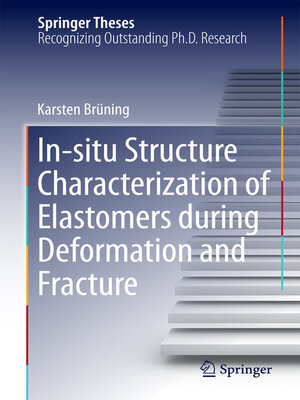In-situ Structure Characterization of Elastomers during Deformation and Fracture
ebook ∣ Springer Theses
By Karsten Brüning

Sign up to save your library
With an OverDrive account, you can save your favorite libraries for at-a-glance information about availability. Find out more about OverDrive accounts.
Find this title in Libby, the library reading app by OverDrive.



Search for a digital library with this title
Title found at these libraries:
| Library Name | Distance |
|---|---|
| Loading... |
This thesis offers novel insights into the time-dependent structural evolution of polymers under deformation. In-situ tensile experiments at high-brilliance synchrotron sources allowed to characterize the material with unrivaled resolution in time and space. The strain-induced crystallization in natural rubber was studied by wide-angle X-ray diffraction. Special emphasis was put on the establishment of new structure-property relationships to give a more in-depth understanding of the mechanical performance of rubber parts, e.g. in tear fatigue loading. To this end, the kinetics of strain-induced crystallization were investigated, subjecting the material to high strain rates. The local structure around a crack tip was observed by scanning wide-angle X-ray diffraction. Ultra-small angle X-ray scattering served to study filled elastomers under deformation, from specially prepared model filler systems to industrially relevant carbon black filled rubbers. Other methods include electron microscopy coupled with in-situ tensile testing and optical dilatometry to examine cavitation in rubbers.
The underlying theory as well as a literature review are covered by an extensive introductory chapter, followed by a description of the experimental techniques. The results are presented in more detail than in the original journal publications.






